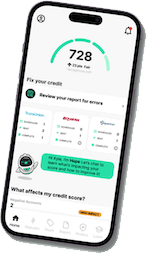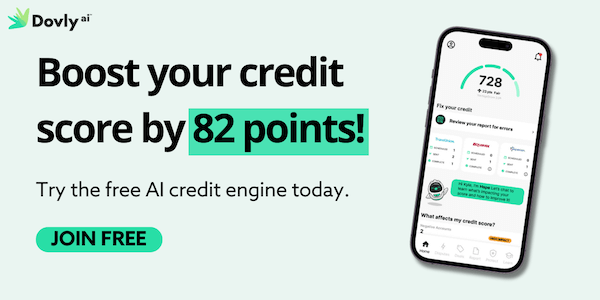677 Credit Score: What You Need to Know

A 677 credit score is right on the edge of fair and good credit—it won’t lock you out of loans, but it may cost you in interest. This guide breaks down what your score means, what you can qualify for, and how to take smart steps to improve it. Whether you’re eyeing a car, home, or credit card, we’ve got tips to help you level up.
Your credit score can unlock doors—or keep them closed. If you’ve landed on this page wondering what a 677 credit score means, what it qualifies you for, and how you can improve it, you’re in the right place.
Let’s break down what this number really means—and how to make it work in your favor.

What Does a 677 Credit Score Mean for Me?
A 677 credit score is right on the edge between a fair credit score and good credit score depending on where you are pulling your score from. It won’t lock you out of loans, but it might mean you pay more in interest than someone with a higher credit score. You’re in a solid position to qualify for credit, but you’ll likely need to be strategic in how you shop around.
This credit score suggests that you’ve been doing some things right—like paying bills on time—but there might still be a few things holding you back, such as high credit card balances or a limited credit history on your credit reports. With some targeted improvements, you can bump your score solidly into the good credit score range and unlock even better financial opportunities.
Lending Options
Personal Loans
With a 677 credit score, you can often get approved for a personal loan, though your interest rate may be higher than someone with excellent credit. Some lenders may ask for proof of stable income, and others might cap your personal loan amount. Prequalification tools can help you estimate your rate without a hard credit check.
Mortgage Loans
A 677 credit score is often enough to qualify for a home loan, particularly through government-backed programs like FHA loans. You might need a larger down payment and could face private mortgage insurance (PMI), but a home loan is very much within reach. It is always worth looking at conventional loans versus FHA loans.
Car Loans
Many lenders are generally more flexible with credit scores in the upper 600s when it comes to car loans. You should be able to finance a vehicle, although rates might not be the most competitive. To get the best deal, consider making a larger down payment or getting pre-approved by your bank or credit union.
Credit Cards
You’ll likely qualify for unsecured credit cards, including those with rewards. However, you may receive lower credit limits or fewer perks than someone with a higher credit score. Look for cards designed for fair credit to good credit—they often come with solid benefits and fewer fees. Whether you’re applying for a loan or credit card, your credit score will play a major role in the terms you’re offered.
Other Lending Options
Alternative lending sources like credit unions, peer-to-peer lenders, or buy-now-pay-later services might offer favorable terms on credit products. You may also be eligible for store financing or small business loans if you meet other criteria like income or collateral.
What Is a Credit Score?
Your credit score is a three digit number that different lenders use to evaluate how risky it might be to lend you money. Think of it like a credit record or credit grade. It’s essentially your financial reputation on paper. This number gives potential lenders a snapshot of how well you manage debt before extending credit products to you.
Scoring Models
There are multiple different credit scoring models but there are two that are primarily used:
FICO Score
The most commonly used model by lenders, especially for mortgages and auto loans. FICO has multiple versions, and lenders may use different ones depending on the product.
VantageScore
Developed by the three major credit bureaus, VantageScore has gained popularity due to its quick credit score generation and its emphasis on trending data.
Though both credit scoring models aim to predict your creditworthiness, they may weigh different factors more heavily, which can result in slight variations in your credit score.
Ranges
Here’s how the FICO Score ranges are broken down:
300–579: Poor
This range typically includes consumers with significant negative credit history such as late payments, charge-offs, or even bankruptcy. Credit applicants in this range may be required to provide deposits or may be denied altogether.
580–669: Fair
Credit scores in the fair range are often considered subprime or fair credit, meaning lenders may still approve credit but at higher interest rates. Individuals here are viewed as moderate credit risks and may have a mix of on-time and missed payments.
670–739: Good
This is where you start to see better approval odds and decent interest rates. Lenders generally view borrowers with a good credit score as low risk. Most standard financial products become accessible, though you may not receive the very best terms.
740–799: Very Good
Consumers in the very good credit range typically enjoy favorable interest rates and terms on loans and credit cards. It reflects a strong credit history with low credit utilization rate and consistent, timely payments.
800–850: Excellent
This top tier opens doors to the best financial products on the market, including premium credit cards and the lowest rates available. An excellent credit score indicates a long-standing history of responsible credit management and minimal debt.
With a credit score of 677, you’re just barely into the good credit score category with FICO, but still in the fair credit score range with VantageScore. This is why regularly reviewing your score through different services can give you a more complete picture.
Factors
Credit scores are calculated using several key factors, each contributing a specific percentage to your overall credit score. Understanding how these factors affect you can help you focus on the areas that offer the biggest opportunity for improvement.
Payment History (35%)
This factor has the most significant impact. It reflects whether you’ve paid your past credit accounts on time. Even a single missed or late payment can significantly affect your credit score. Lenders see consistent, on-time payments as a sign of financial responsibility.
Credit Utilization (30%)
This measures how much of your available credit you’re using. This is also known as your credit utilization ratio or credit utilization rate. If you have a total credit limit of $10,000 and are using $3,000, your utilization rate is 30%. High credit utilization rates can signal financial stress and negatively impact you.
Length of Credit History (15%)
Longer credit history demonstrates stability and give lenders a longer track record to evaluate. The average age of credit is why keeping older accounts open, even if unused, can benefit your credit score.
New Credit (10%)
When you apply for new credit, a hard inquiry appears on your credit report, which can cause a slight, temporary dip in your score. Opening multiple new accounts in a short period can be a red flag to lenders, suggesting you might be taking on too much debt too quickly.
Credit Mix (10%)
A healthy mix might include credit cards (revolving credit), auto or student loans (installment loans), and a mortgage. While you don’t need every type of credit, a balanced profile can slightly improve your credit score.
Together, these components create a snapshot of how you manage credit. Focusing on the top two factors—payment history and credit utilization—will give you the most immediate impact.
How to Improve Your Credit
Raising your credit score from 677 to 700+ is absolutely possible—and can make a real difference in your financial life. While a 677 credit score is decent, small changes in your financial behavior can yield big results over time.
Pay Every Bill On Time
Missing even one payment can cause a significant drop in your credit score and stay on your report for up to seven years. Set reminders or automate payments to ensure you’re making timely payments.
Reduce Credit Card Balances
Using a large portion of your available credit—known as high credit utilization—can hurt your score. Aim to keep your utilization below 30%, and ideally closer to 10% to see the best impact.
Consolidate Credit Card Debt
If you’re juggling multiple high-interest balances, it might be time to consolidate credit card debt into a single, lower-interest loan. This can simplify repayment and reduce your overall interest paid.
Avoid Opening New Accounts Unnecessarily
Each application for credit triggers a hard inquiry, which can temporarily reduce your credit score. Multiple inquiries within a short time can signal risk to lenders. Only apply when necessary and space out applications when possible.
Check Your Credit Report for Errors
According to studies, one in five credit reports contains an error. Common mistakes include incorrect account statuses, fraudulent accounts, or outdated personal information. Request your free credit reports from AnnualCreditReport.com and dispute any inaccuracies.
Keep Old Accounts Open
The length of your credit history affects your credit score, so older accounts help establish stability. If a card has no annual fee, consider keeping it open even if you rarely use it. Just make a small charge periodically to keep it active.
Diversify Your Credit
A healthy mix of credit accounts—like a credit card, an car loan, and a student loan—shows lenders you can handle various types of credit. If your credit file is thin, consider a credit-builder loan or a secured credit card to add positive history and begin diversifying your credit mix.
Become an Authorized User
If a trusted family member has a long-standing credit card with a low balance and on-time payments, being added as an authorized user could give your credit score a quick boost. Make sure the issuer reports authorized users to credit bureaus.
Improving your credit is a marathon, not a sprint. By practicing healthy financial habits and monitoring your credit regularly, you’ll be well on your way to moving from fair to good—and beyond.
How Long Does It Take?
Small improvements, like reducing your utilization or fixing an error, can yield results in 30–60 days. Bigger changes, like building a longer history or recovering from late payments, might take six months to a year—or more. The key is consistency and patience.

Conclusion
A 677 credit score isn’t a dead end—it’s a launching pad. You’re already in the good credit score catery with FICO and within striking distance of the good credit score category with VantageScore. With a few intentional steps, you could start unlocking lower interest rates, higher credit limits, and more favorable loan terms.
Improving your credit score isn’t just about numbers—it’s about creating more freedom and confidence in your financial decisions. Whether it’s getting approved for a new home, securing a better auto loan, or even landing a great job (yes, some employers check credit!), every point counts.
Let Dovly be your credit ally. Our smart credit engine works 24/7 to help you dispute inaccuracies and optimize your credit profile—all starting for free. Your future self will thank you for taking the first step today.
Frequently Asked Questions



